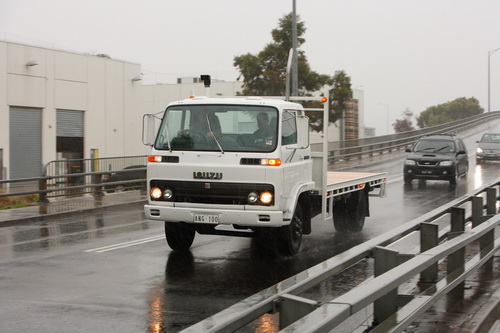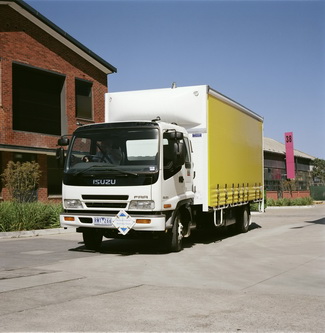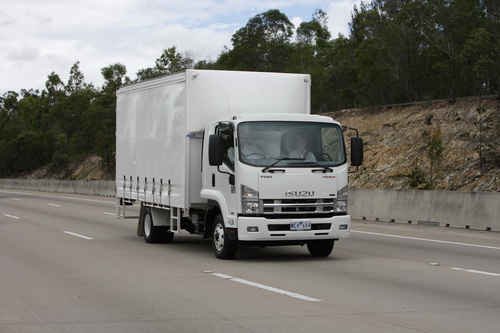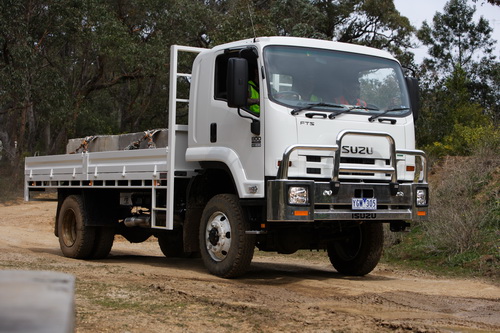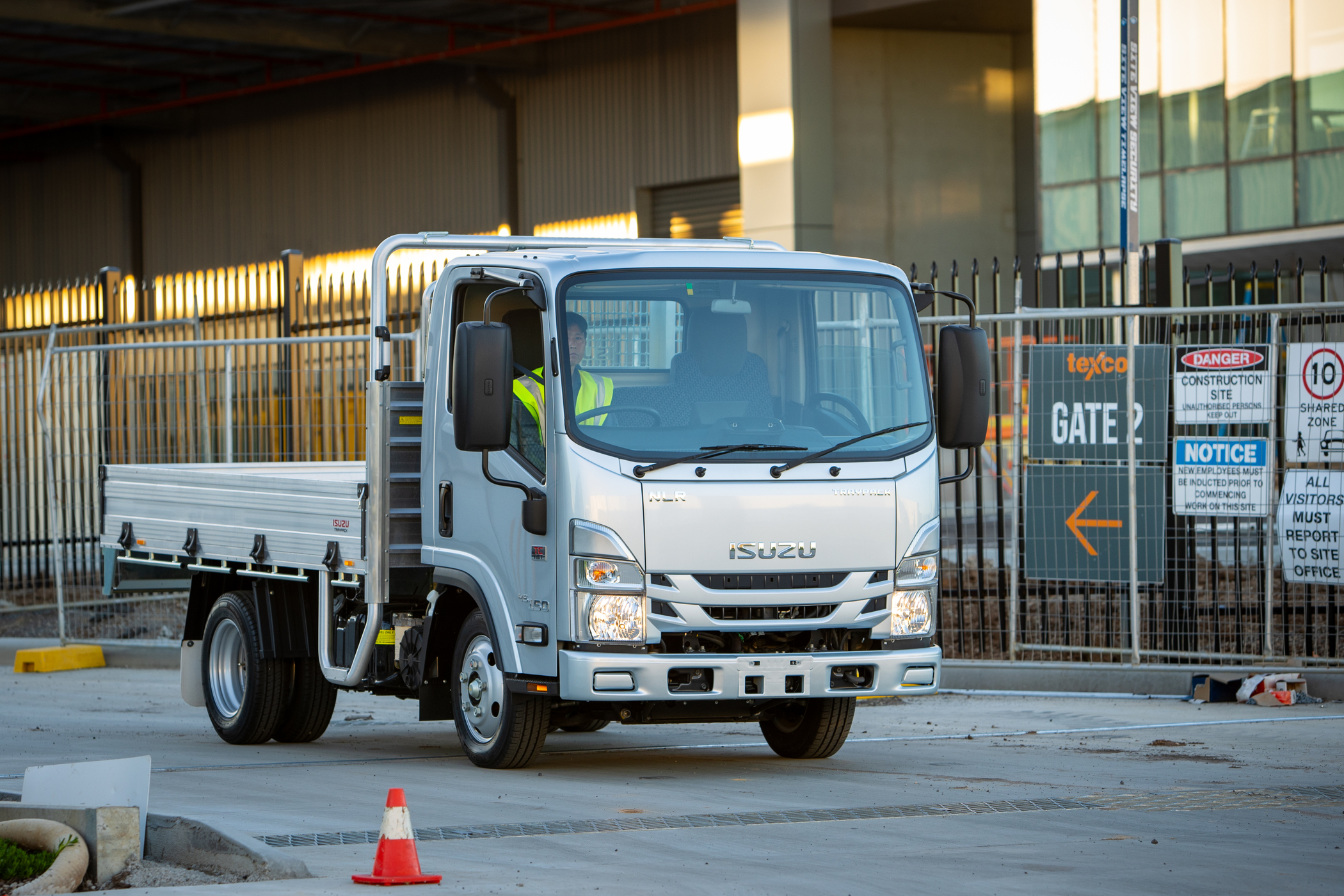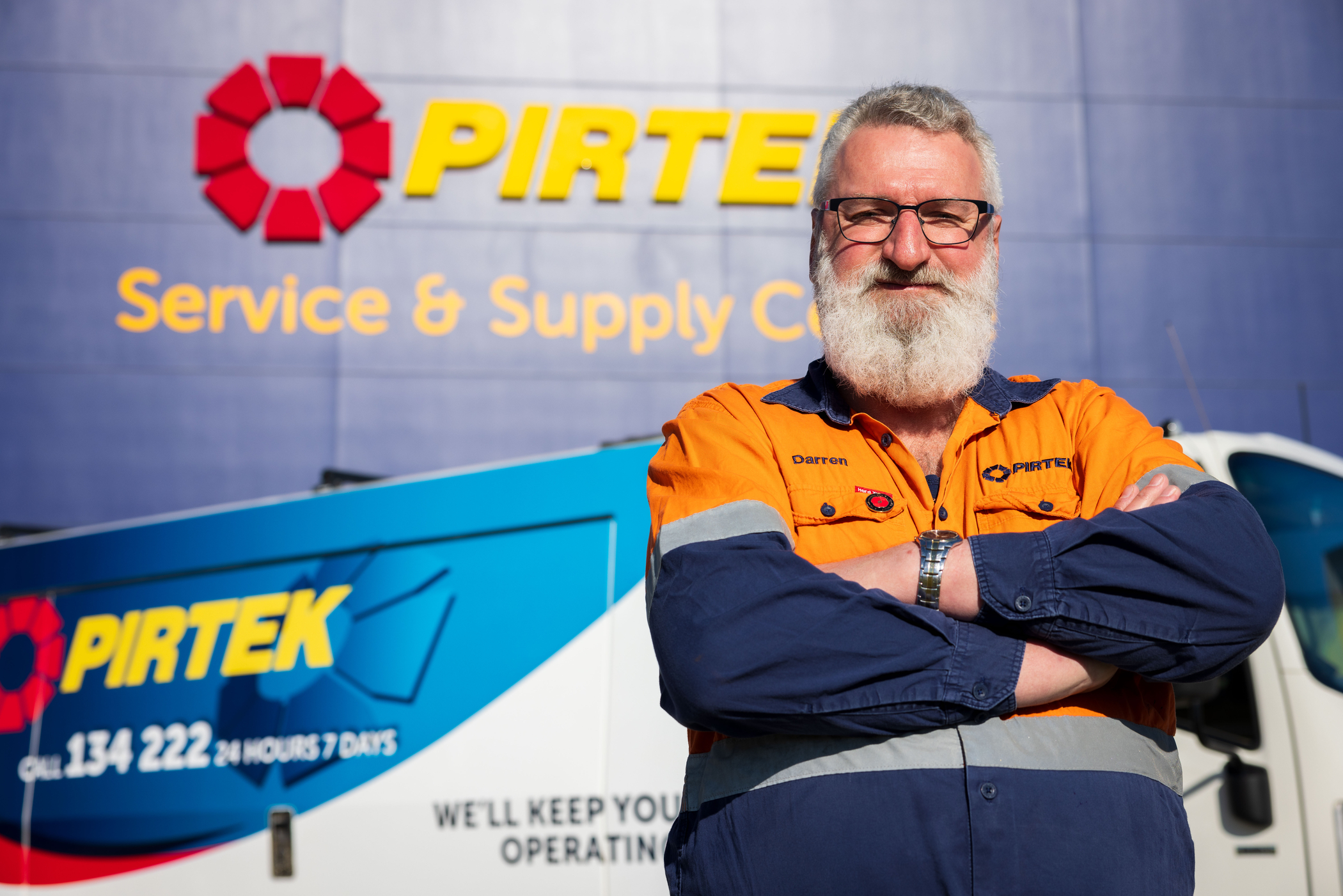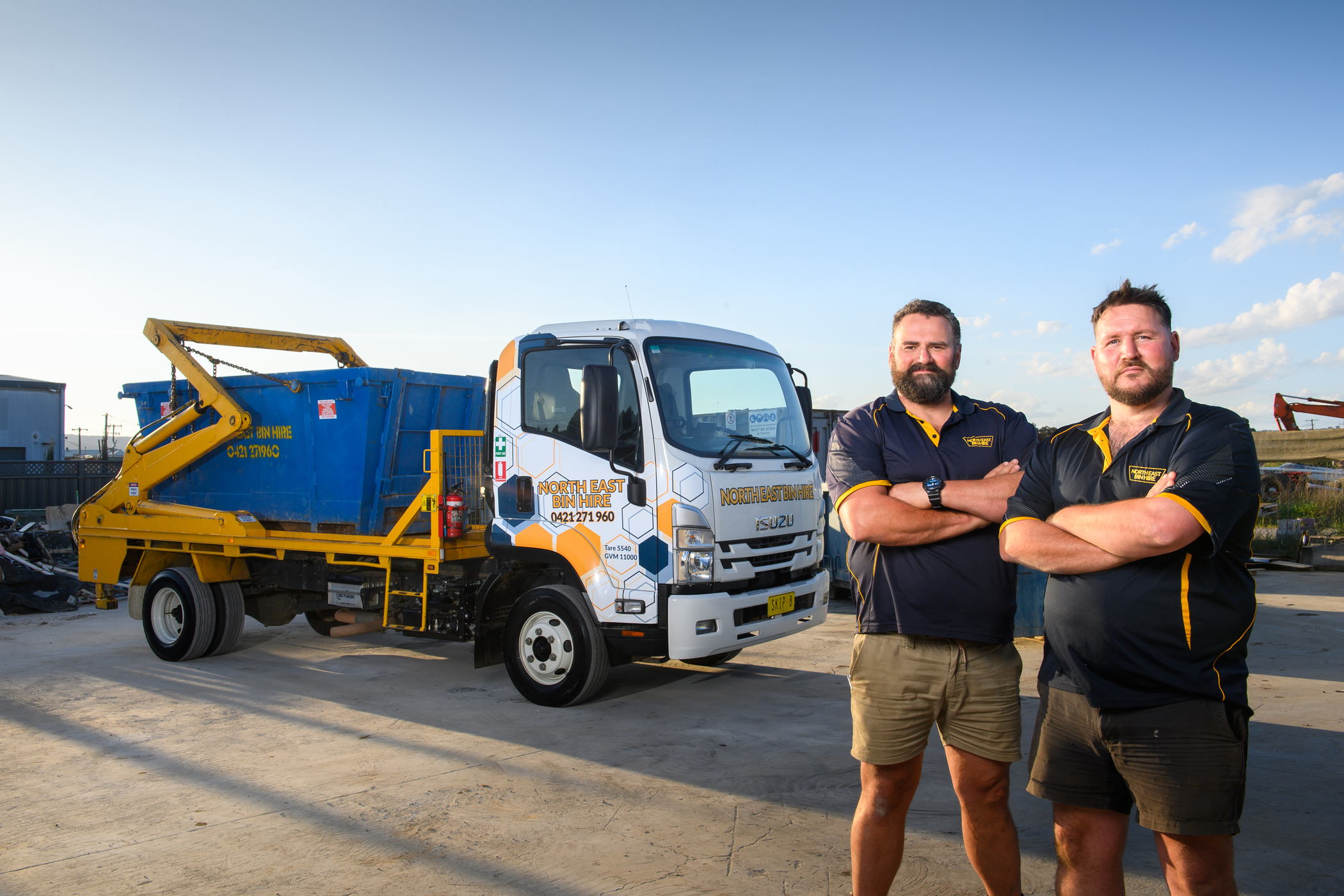THE ROAD TO HERE: THE ISUZU F SERIES EVOLUTION
Mar 03, 2016
•
0min read
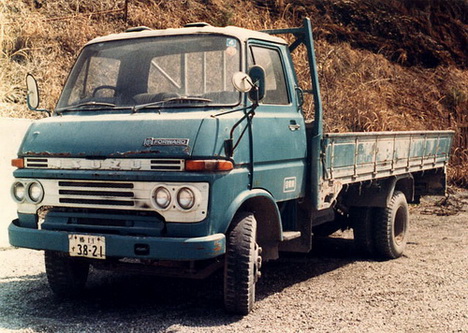
[image_gallery][/image_gallery]
Building on close to 30 years of market-leading innovation, Isuzu Australia Limited has newly launched its F Series range, cementing itself at the top of the medium-duty segment of the truck market.
The Isuzu F Series has steadily received industry-leading improvements since 1986, keeping pace with a rapidly changing Australian market.
In 2016, Isuzu is continuing its steadfast commitment to the range, with the development of brand new engine technology out of Japan and a range of clever updates to ensure just about every application is catered for.
What's new?
The new 2016 Isuzu F Series launch is the most comprehensive and systematic upgrade to the Isuzu range in nearly a decade.
Described as a genuine game-changer within the medium-duty segment, the new offering brings together a powerful mix of three decades of manufacturing and on-road experience, as well as industry-leading innovation.
Aside from a slick new exterior look, an evolution under the skin takes shape with the introduction of Isuzu’s high torque, low displacement new 4HK1 turbocharged and intercooled diesel engine.
Alternatively, there’s a new six-cylinder Isuzu 6HK1 engine with maintenance-free Diesel Oxidation Catalyst (DOC) for an ultra-reliable, low maintenance solution.
Rounding-out a complete road transport solution is the addition of Isuzu’s new torque convertor equipped automated manual transmission (TC-AMT), amid a range of other additions and enhancements.
A fresh approach
IAL Chief Engineer, Product Strategy, Simon Humphries says the technology underpinning the new range represents a more flexible strategy based on a proud medium-duty lineage of anticipating the needs of the customer.
“Looking at the new range from an historical perspective, we’ve taken particular heed of what’s operated well over the years, what’s been less successful, and, as always, the needs of our customers.
“It’s really been a case of catering to as many niche applications as possible and affording genuine choice for our customers,” he said.
“Historically, the Isuzu F Series range has been an extremely flexible, fit-for-purpose solution. We’ve worked hard to ensure that remains the case with this new line-up.
“When you look at the medium-duty market in isolation – Isuzu has consistently raised the bar over the last 30-odd years. Be it in the area of emissions, driveline or safety, our approach has always been one of continual improvement and innovation. This 2016 F Series range is no different.”
Green credentials
Isuzu Australia Limited (IAL) Director and Chief Operating Officer Phil Taylor said Isuzu’s low displacement, low emissions engine (the 5.2 litre new 4HK1) is the cleanest medium-duty Japanese diesel engine available on the Australian market.
“The new 4HK1 truly is ground-breaking technology out of Japan, and we’re delighted to be offering such a clean and environmentally friendly alternative in the marketplace.
“We’re all too aware that the aims and ambitions of many larger fleets, as well as owner drivers, are aligned to sourcing better outcomes for our environment. We’ve responded to that, in particular, with the new 4HK1 engine technology, which is the cleanest Japanese medium-duty diesel engine currently available.
“The evolution of the F Series has come to a head today in a landmark model range. We are confident we have provided our customers with the best available technology for a sustainable vehicle that will last the test of time,” Mr Taylor said.
The journey begins
In 1966, the year Sir Jack Brabham dominated Formula Two in his BT-18 Honda and was named Australian of the Year, Isuzu Motors Japan released their first medium-duty commercial vehicle known simply as the ‘TY’.
A few years later, in 1970, the TY received the name ‘FORWARD’. This was later shortened to F Series for the emerging Australian market of the time.
When General Motors Holden first began importing Isuzu trucks from Japan to Australia in 1972, few could have envisaged the lasting impact Isuzu would have on industry and the Australian truck market.
Isuzu F Series in Australia
The contemporary Australian Isuzu F Series range we’re most familiar with today can be traced back to 1986 when Isuzu restyled its medium-duty JCS, SBR, SCR, JBR and JCR models with a modernised cabin – launching them, collectively, under the Isuzu F Series nameplate.
Many of these earlier models had size on their side. The 1979 Isuzu JBR for example came equipped with a 5.8 litre, six-cylinder diesel engine producing 97 kW and 343 Nm. Though scant on luxuries compared to today’s standards, the JBR boasted an AM radio and a heater – and that’s about it.
New cabs
In 1996, the F Series range was significantly enhanced by the addition of a new ‘aero-cube’ cabin concept for all new models. Another example of Isuzu setting the standard, the introduction of the aero-cube has been retained as a truck design staple for cab-over vehicles ever since.
World-leading
At the end of 2002, Isuzu Motors was the world’s number one medium-duty truck manufacturer, with worldwide production for the year coming in at 56,779 units, almost 13,500 units ahead of Ford (in second place).
Isuzu’s domination in the medium-duty segment – despite relatively tough conditions across world markets at the time – was proof of genuine product acceptance throughout the world.
Back in Australia the F Series underwent a major upgrade in 2003 which saw the largest new truck model roll-out in the country’s history.
The 2003 F Series range received a new family of SiTEC turbocharged and intercooled ADR 80 compliant engines, benefiting from more torque in every model, while GVM ratings and wheelbases were increased in many models.
The evolution continues
2007 was a massive milestone in the story of the Isuzu F Series. Changes to the range provided truck buyers with significant enhancements in power, safety, and efficiency, while also offering large reductions in exhaust emissions across its 50-plus model variants.
The all-new Isuzu SiTEC SERIES II engines were the cleanest Japanese conventional diesel-powered engines available on the medium-duty market.
Isuzu also upped the ante on safety in 2007 with the introduction of a host of new features, such as driver's SRS airbag and ABS brakes, as standard. Automated manual transmissions (AMT) were also introduced providing even smoother and more responsive gear changes.
Safety and technology
Further safety developments took shape in 2013 with all Isuzu F Series models adopting cornering lamps and passenger airbags.
A new, state-of-the-art digital audio visual equipment (DAVE) multimedia system was also introduced solidifying Isuzu’s commitment to be at the forefront of technological change. A masterstroke of its time, the introduction of Isuzu’s DAVE hardware laid the foundation for ongoing intelligent transport system (ITS) advancements such as electronic work diaries and telematics, to name but a few.
Big data revolution
Isuzu’s locally developed telematics platform was introduced the following year, presenting owner-drivers and fleet managers the opportunity to build genuine efficiencies into their operations.
Acting much like an aircraft black box, Isuzu Telematics works in tandem with a server and on-board wireless devices to provide information such as live positioning, trip playback, geo-fencing and fleet and engine data.
Isuzu F series evolution: From now on
1966
The F Series (as we know it now) is developed in Japan as a medium-duty truck under the name ‘TY’.
1970
The TY is renamed ‘FORWARD’ for the Japanese domestic and export markets.
1972
General Motors Holden (GMH) begins importing Isuzu trucks to Australia – initially marketed as ‘Bedford by Isuzu’ – from Japan.
1986
Isuzu restyles its medium-duty JCS, SBR, SCR, JBR and JCR models with a modernised cabin. The new range is launched under the Isuzu F Series name.
1996
A new F Series range is introduced. The ‘aero cube’ cabin concept is adopted across both the N and F Series. This cab design is retained for the next 12 years.
2000
The widely praised FVR, FTR and high-powered FRRs are introduced. These strong performers are equipped with the Isuzu 6HE1-TC engine and the MLD7Q seven-speed overdrive transmission.
2003
The Isuzu F Series model range expands significantly. For the first time ever, turbo-charged and air-to-air intercooled engines are standard across the line-up, with all complying to Euro III standards.
2007
All-new 700P F Series are released with more power and torque across the range while adhering to strict Euro IV emission standards.
The Isuzu FSR 850 occupies a unique position in the market. With a low tare weight and 14-tonne GVM rating, it carries more payload than all 15-tonne GVM competitors.
AMT introduced.
2013
Safety improvements featuring cornering lamps and dual airbags happen across the range.
2016
The F Series release in this year offers superior safety, choice and emissions treatment with improvements to power and torque.
ends
For further information, please contact:
Jeff Birdseye
Marketing Manager
Isuzu Australia Limited
Phone: 03 9644 6666
For Isuzu Truck Releases and Photos:
Arkajon Communications
Phone: 03 9867 5611
Email: isuzu@arkajon.com.au


